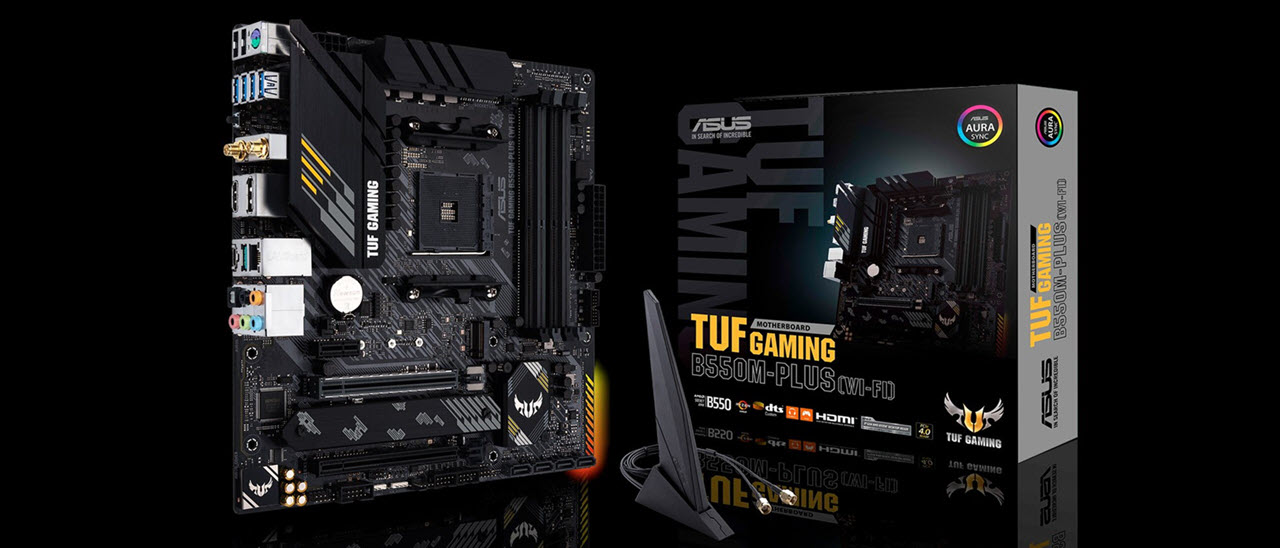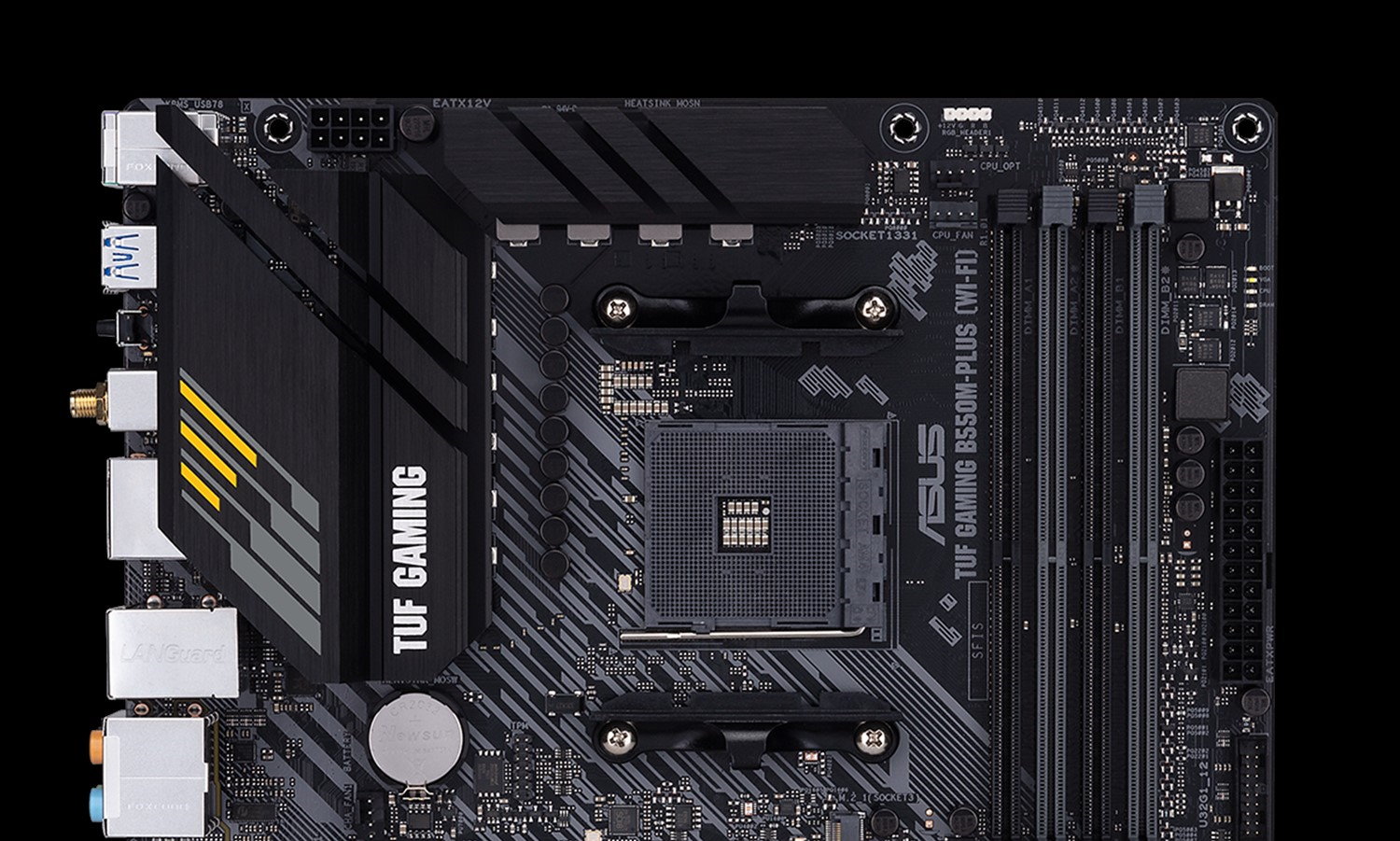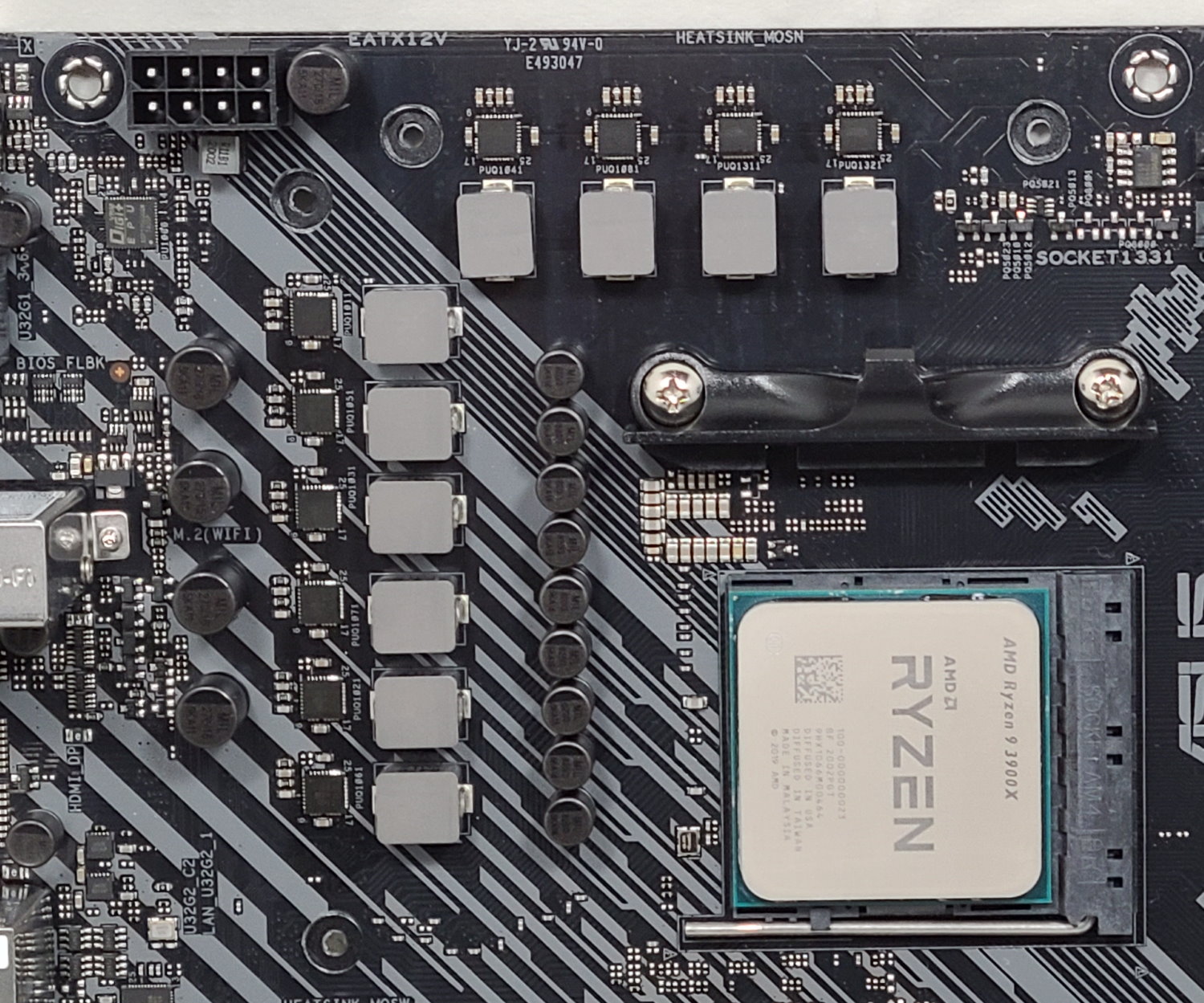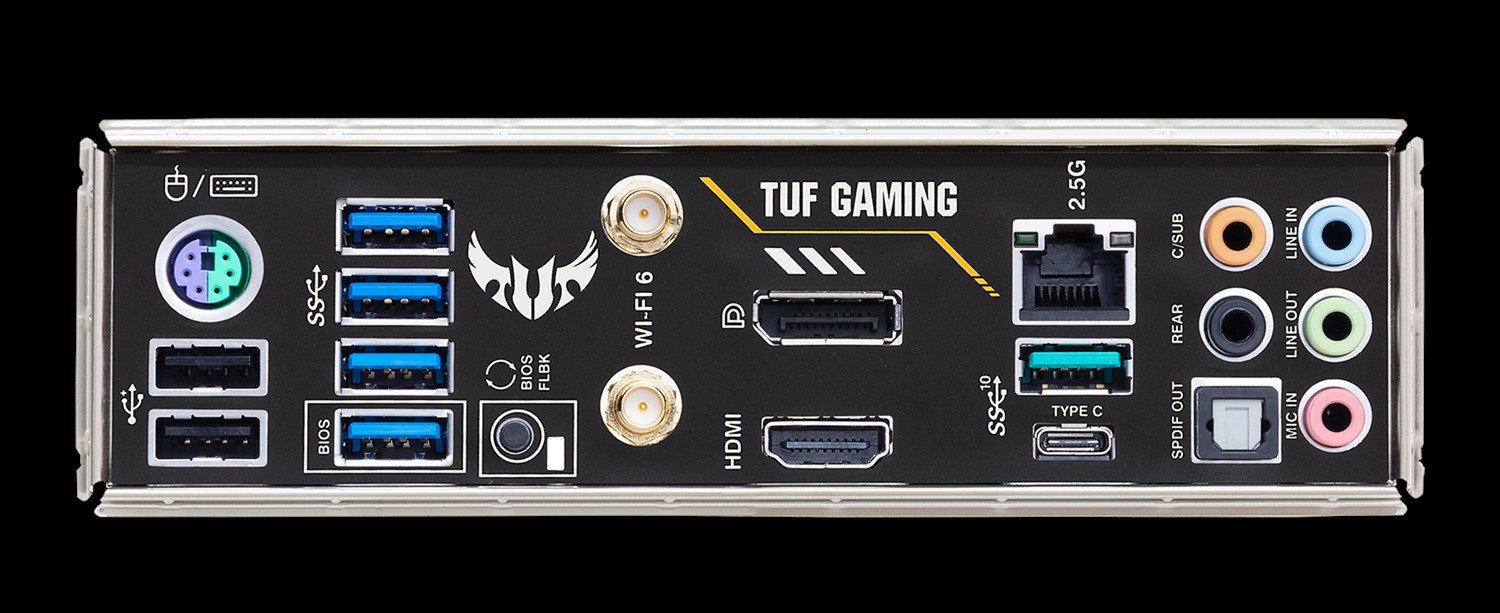Tom's Hardware Verdict
The Asus TUF Gaming B550M-Plus A Wi-Fi is a well-rounded motherboard that performs as expected and includes Wi-Fi 6, dual M.2 and a USB 3.2 Gen2 Type-C port in a MicroATX form-factor.
Pros
- +
Intel Wi-Fi 6 AX200
- +
USB 3.2 Gen2 Type-C port
- +
TUF protections
Cons
- -
Looks may not be for everyone
Why you can trust Tom's Hardware
The TUF B550M-Plus Wi-Fi ($179.99) resides in the low-/middle-end of the B550 range. For this price, you’ll get a MicroATX board sporting an 8+2 phase VRM, dual M.2 slots, integrated Intel WiFi 6 and even a USB 3.2 Gen2 Type-C port.
Several years ago, the Asus TUF series of motherboards meant heavy cladding (Asus often called it armour) for protection, ample features, and a mid-range price point. Fast forward to today and the TUF brand, particularly in the laptop space, has shifted focus to lower-end gamers.
Things have changed in the motherboard realm as well. Gone is the armor, and we get more of a mainstream SKU at an entry-level price. In B550 form there are three Asus TUF-branded parts, the TUF Gaming B550-Plus, TUF Gaming B550M-Plus and Plus Wi-Fi that we’re looking at here. They include TUF chokes and capacitors, along with a reinforced PCIe slot and ESD protection for the rear IO and LAN.
In our testing, the B550M-Plus Wi-Fi performed well at stock speeds, easily matching all other B550 results. The only potential outlier was application startup and the Powerpoint tests in PCMark. Outside of that, our gaming results were spot on and power consumption was right about in the middle. On the overclocking side of things, the board was able to reach our lofty 4.3 GHz target and handled our 32GB/3600 RAM kit without issue as well.
Below, we’ll take a look at the board’s specifications and features, as well as check out performance and power consumption in more detail. First, here’s the board’s full specifications from Asus.
Specifications - Asus TUF Gaming B550M-Plus Wi-Fi
| Socket | AM4 |
|---|---|
| Chipset | B550 |
| Form Factor | Micro-ATX |
| Voltage Regulator | 10 Phase (8+2, CPU/SOC, 50A/25A MOSFETs) |
| Video Ports | (1) HDMI (v2.1), (1) DisplayPort (v1.2) |
| USB Ports | (2) USB 3.2 Gen 2, Type-A and Type-C (10 Gbps), (4) USB 3.2 Gen 1, Type-A (5 Gbps), (2) USB 2.0, Type-A |
| Network Jacks | (1) 2.5 GbE |
| Audio Jacks | (5) Analog plus SPDIF |
| Legacy Ports/Jacks | PS/2 |
| Other Ports/Jack | ✗ |
| PCIe x16 | (1) v4.0 (x16), (1) v3.0 (x4) |
| PCIe x8 | ✗ |
| PCIe x4 | ✗ |
| PCIe x1 | (1) v3.0 (x1) |
| CrossFire/SLI | AMD 2-Way CrossfireX |
| DIMM slots | (4) DDR4 4600(OC), 128GB Capacity |
| M.2 slots | (1) PCIe 4.0 x4 / SATA + PCIe, (1) PCIe 3.0 x4 / SATA + PCIe |
| U.2 Ports | ✗ |
| SATA Ports | (4) SATA3 6 Gbps |
| USB Headers | (1) USB v3.2 Gen 2, (1) USB v2.0 |
| Fan/Pump Headers | (4) 4-Pin |
| RGB Headers | (2) aRGB (3-pin), (1) RGB (4-pin) |
| Legacy Interfaces | ✗ |
| Other Interfaces | FP-Audio |
| Diagnostics Panel | ✗ |
| Internal Button/Switch | ✗ |
| SATA Controllers | ✗ |
| Ethernet Controller(s) | Realtek RTL8125B (2.5 GbE) |
| Wi-Fi / Bluetooth | Intel Wi-Fi 6 AX200 (802.11ax, MU-MIMO, 160 MHz / BT 5.1) |
| USB Controllers | ✗ |
| HD Audio Codec | Realtek ALC S1200A |
| DDL/DTS Connect | ✗ / Yes |
| Warranty | 3 Years |
Features
Looking at the in-box accessories, our B550M-Plus Wi-Fi includes most of what you need to get going, but not much more, which is expected at this price point. Below is a list of all the bits that come with the motherboard.
- I/O shield
- Driver DVD
- User Manual
- Two SATA cables
- Wi-Fi antenna
- M.2 Screw package/rubber package
- TUF Gaming Sticker/Certification card
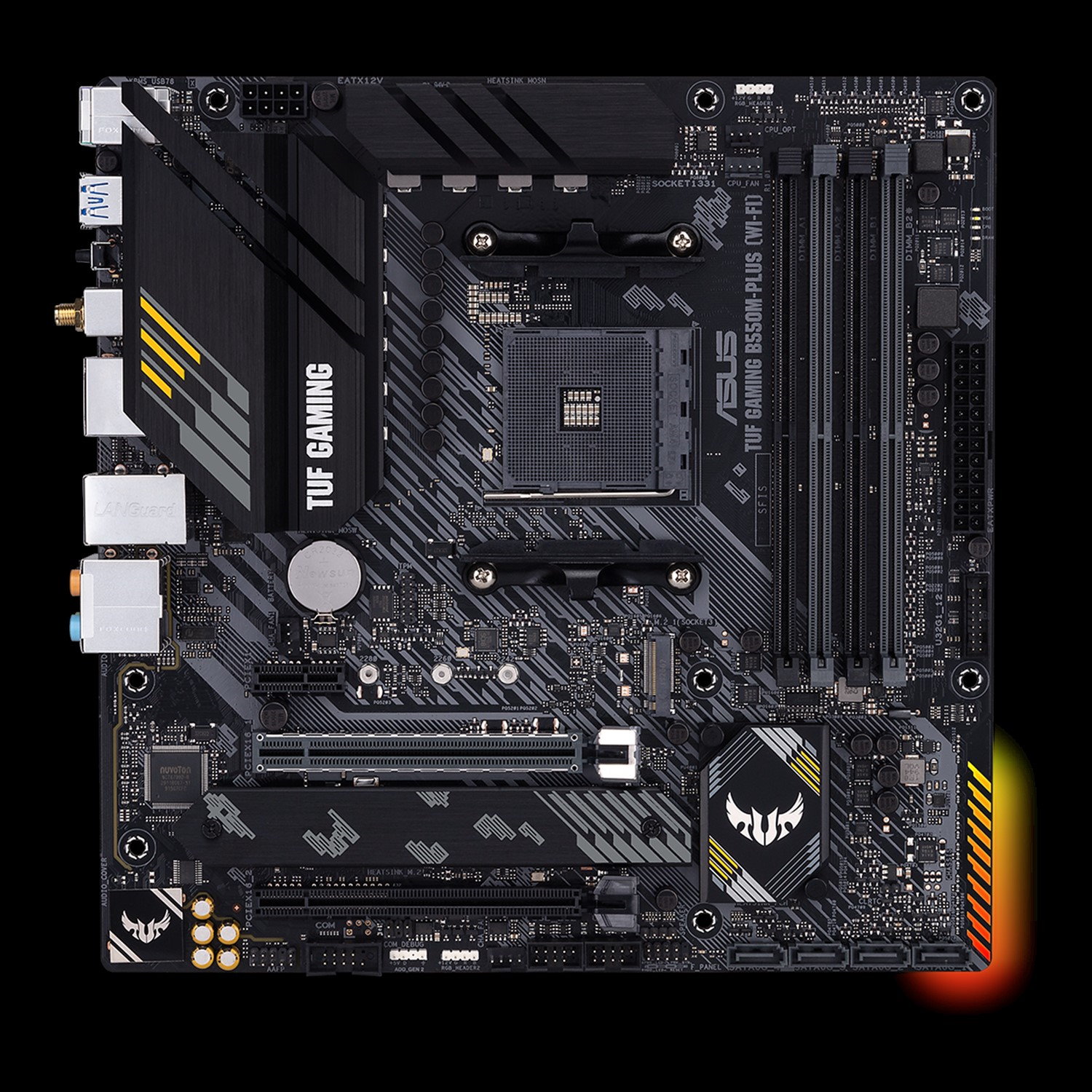
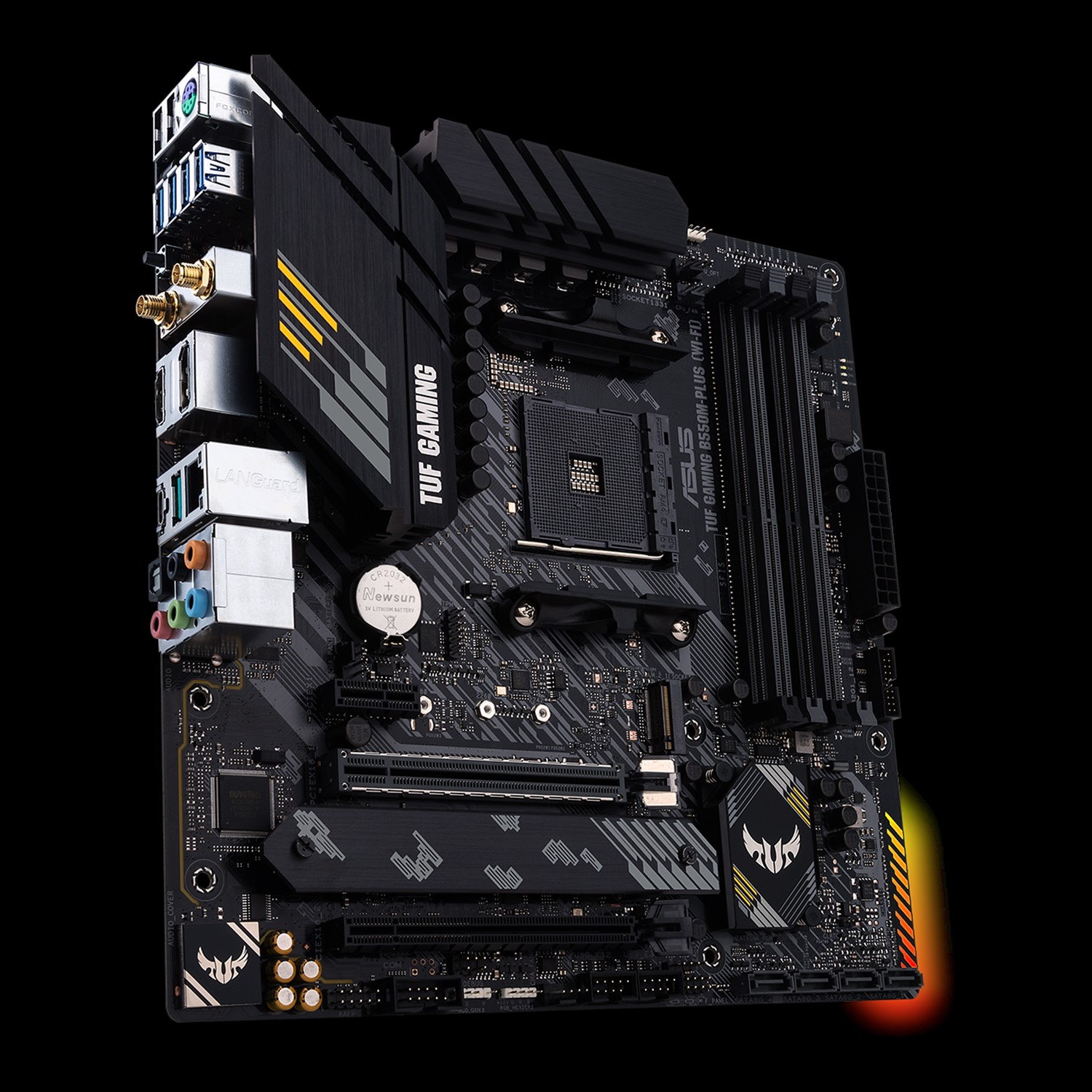
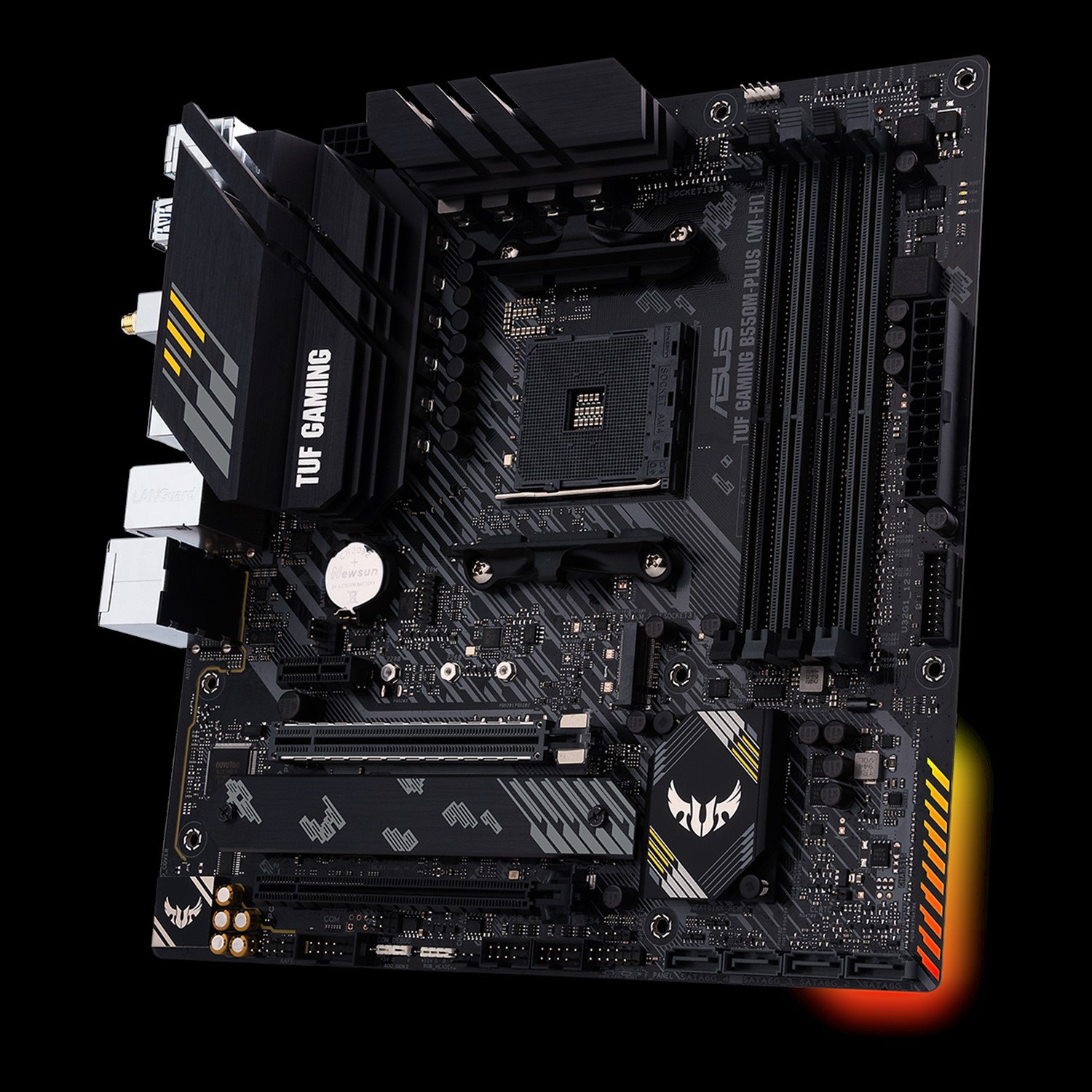
Looking over the motherboard for the first time, we’re greeted by a black PCB and black heatsinks. along with the TUF Gaming branding stenciled on. The PCB also has a pattern of grey lines coming from the bottom-right corner by the chipset up through the rear IO. As far as RGB lighting, the board has a small area in the bottom right corner that sends light to both the top and bottom of the bord. Overall, the board’s appearance is theme agnostic and should fit in well with most build themes, though it’s certainly not on the more-attractive end of the B550 motherboard spectrum.
Get Tom's Hardware's best news and in-depth reviews, straight to your inbox.
Starting on the top half of the Asus TUF Gaming B550M-Plus Wi-Fi, we first take not of the large heatsinks, and all the connections up top. Sending power to the VRMs is a single 8-pin EPS connector found between the left and top VRM banks. The large VRM heatsink on the left reaches out over the rear IO area, covering a lot of the PCB underneath. On top of this heatsink is the TUF Gaming logo and the yellow-and-grey patterns representing the brand.
Moving to the right, past the VRMs and socket area, are four DIMM slots alternating in grey and black for the matching channels. The board supports up to 128GB of RAM with speeds up to DDR4 4600(OC). As always, your mileage may vary for memory speed depending on the kit you use and the ability of the integrated memory controller (IMC) to handle the capacity and speed.
Just above the DIMM slots are two fan headers (of four total) and a 4-pin RGB header (one of 3 total). All fan headers support up to 1A/12W. I would like to have seen at least one header support increased output for multiple powerful fans or a water pump.
On the right side of the DIMM slots is the 24-pin ATX power connector and a front-panel USB 3.2 Gen1 header. Just above these is the Q-LED section. Here there are four LEDs that check key components (CPU, DRAM, VGA and boot) during the POST process. If an error is found, the LED stays lit up until the problem is resolved. Since this board doesn’t have a more informative 2-character debug screen, these will certainly help when trying to debug POST issues.
Focusing on power delivery, the Asus TUF Gaming B550M-Plus Wi-Fi uses an 8+2 (Vcore/SOC) configuration with 50A Vishay Sic639 MOSFETs and Asus’ teamed configuration. Power is managed by an ASP1106G (x+y = 4+2) controller. While this isn’t the most robust power delivery we’ve seen, it handled our Ryzen 9 3900X without issue during stock and overclocked operations. It’s certainly capable.
On the bottom half of the board lives the audio bits, as well as the PCIe configuration and storage. Starting on the far left, we see some of the audio parts exposed. Hidden under the TUF Gaming Audio cover is an S1200A codec from Realtek that Asus has tweaked a bit. Also exposed is the audio shielding line, as well as the Japanese audio capacitors. The S1200A is a solid audio codec, but a step below the S1220A used on the more expensive motherboards. Most users will be satisfied with this audio solution.
In the middle of the board are three PCIe slots, two full-length slots and a single x1 slot. The top full-length slot is reinforced with Asus SafeSlot protecting the slot against shearing (as well as EMI) from heavy video cards. This slot is fed from the CPU and runs at PCIe 4.0 x16 speeds. The bottom full-length slot uses bandwidth from the chipset and runs at PCIe 3.0 x4, while the top x1 size slot is PCIe 3.0 x1 and also sourced from the chipset. This configuration supports AMD 2-Way CrossfireX.
In this same area are two M.2 sockets, both supporting up to 80mm modules and both PCIe- and SATA-based devices. The top slot, M2_1, is directly attached to the CPU and runs up to PCIe 4 x4 speeds (32 Gbps) while the bottom slot is PCIe 3.0 x4 (16 Gbps). The manual doesn’t mention lane sharing with PCIe or SATA ports.
To the right of PCIe/M.2 location is the chipset heatsink that is held on with pushpins instead of screws. While this method certainly works, I would like to see these screwed on. Just below the heatsink on the bottom edge of the board are four SATA ports that are oriented vertically. The board supports RAID0, 1 and 10 modes.
Across the bottom are several headers, along with vertical SATA ports mentioned above. Below, we’ve listed all the headers and ports from left to right.
- Front panel audio header
- COM port
- aRGB header (3-pin)
- RGB header (4-pin)
- Chassis Fan header (4-pin)
- (2) USB 2.0 headers
- Speaker header
- Front panel headers
- (4) SATA ports (Supports RAID0, 1, 10)
Looking at the rear IO, we see the plate isn’t integrated, so you’ll have to install it yourself. Outside of that, the board has plenty of USB ports (eight total), including two USB 2.0 ports, four USB 3.2 Gen1 ports, and two USB 3.2 Gen 2 ports (Type-C and Type-A). Video is handled by a DisplayPort and HDMI. The small button here is for the BIOS Flashback feature, designed to update the BIOS without using a CPU. The audio stack consists of five analog plugs and SPDIF. Additionally, there is a legacy PS/2 port for an old keyboard or mouse, as well as a 2.5G Ethernet port.

Joe Shields is a staff writer at Tom’s Hardware. He reviews motherboards and PC components.
-
Soaptrail I am jealous this B550 board has 2.5Gbps Ethernet but my TUF Gaming + Wifi X570 only has 1Gbps Ethernet. Ignore the fact that i have no switches and routers to support 2.5Gbp Ethernet.Reply -
andjayik Ya 2.5gbs u can't get it to run that? I have that too but will never get it to run that speed.Reply -
digitalgriffin The older TUF series (ie: Sabertooth) represented the highest end components and power delivery systems.Reply
Given the networking (RealTek) and power delivery (Disappointed in quality of phases) versus the price, it doesn't really deliver on that TUF branding.
TUF is just branding now and doesn't hold any meaning. -
digitalgriffin Replyandjayik said:Ya 2.5gbs u can't get it to run that? I have that too but will never get it to run that speed.
2.5G standard cat 6e switches are available at $60 now. PCIe cards are also $50. If you are running large files to a NAS (ie: Gaming/code), it would be worth it.
